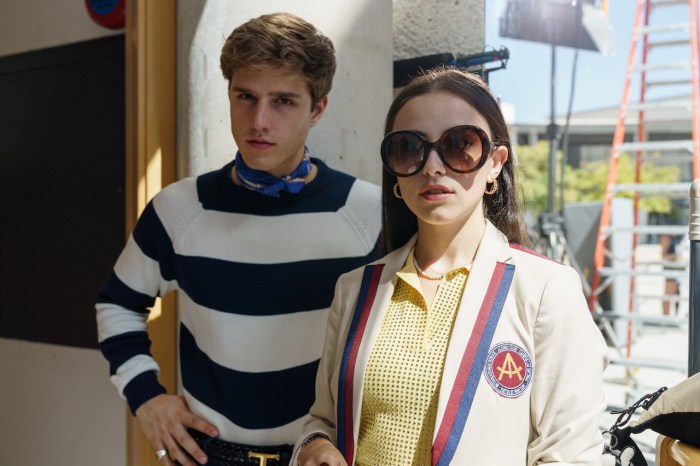Dansk Danse Teater performed “Love Songs” at the Joyce March 11-13. | BJARKE ØRSTED
One remarkable thing about the Dansk Danse Teater (Danish Dance Theatre), directed since 2001 by British-born Tim Rushton, is that only one of the troupe’s dozen dancers is actually Danish — and she’s of African descent. Denmark’s most widely acclaimed contemporary dance company brought Rushton’s “Love Songs” to the Joyce Theater March 11-13 as part of the “Ice Hot: Nordic Dance Festival.”
Rushton describes the hour-long dance as a “celebration of life” that uses jazz classics, originally sung by the likes of Ella Fitzgerald, Louis Armstrong, Billie Holliday, and Sarah Vaughan, all reinterpreted by Danish jazz artist Caroline Henderson.
But nothing about “Love Songs,” including its title, veers far from what audiences would expect. The movement involves sliding in socks (the new dance shoes), passionately swirling arms, baring crotches in hyper-extensions, and more than a tolerable amount of running onstage into place, doing a brief phrase, and running off again — all straight out of the catalog of overused contemporary devices. An oft-repeated motif involves dancers spinning with a leg lifted to the side and crooked over an arm.
Familiar movement devices, well executed, don’t substitute for emotional engagement
The first part of the piece involves company members rising from a row of chairs that are lined up across the rear of the stage under a starlit sky (lighting by Thomas Bek and Jacob Bjerregaard). The dancers do fleeting duets — sometimes in unison, sometimes in counterpoint — that alternate with group passages. The physical encounters aren’t long enough to establish any emotional connections. Luca Marazia (Italian) is a kind of host and ringmaster, prancing his miniature frame across the stage, always trying to belong.
This is a presentational celebration of the dancers’ considerable chops. They do difficult steps — fast or slow, depending on the song — that would be more compelling were there a greater variety of them. Björn Nilsson (Swedish) gets dating advice from “the girls” in a recorded voice- over. All of the couples smooch — some faking it — to “My First Kiss.”
Then, after a curious onstage costume change, a shift in emotional mood emerges upstage in semi-darkness. The new costumes (Charlotte Østergaard) are pretty similar to the ones that preceded — casual wear in neutral colors — except that now some of the women have shinier, semi-formal dresses and a few of the men sport suit jackets. A series of extended duets in this part constitute the substance of the work.
In “All of Me,” lanky Milou Nuyens (Dutch) and handsome Erik Nyberg (Swedish) toss each other around like rowdy teammates as much as lovers; she’s tall, strong, and about his height. The old chestnut “My Funny Valentine” backs an interracial encounter between Maxim-Jo Beck McGosh (African-Danish) and partner Fabio Liberti (Italian by way of Rotterdam.) He’s tall; she’s short. Beck McGosh repeatedly sprints across the stage and hurls herself at Liberti for the sort of flying catches that were gasp-inducing last century, but are now routine.
The only couple that ignites emotional sparks is Ana Sendas and Stefanos Bizas (Portuguese and Greek, respectively.) The heartbreaking song “Lilac Wine” by James Shelton inspires the most eloquent choreography of the evening. The two might be wrestling with a disintegrating love affair or reconciling after a split. She scales his body in a series of simple but meaningful, aspiring lifts.
Despite the talented cast, the piece lacks the emotional impact we’d like from such a nicely concise dance evening, a jazzy, jukebox suite that’s as pleasantly bland as the term “international” implies. A strenuous running-in-place section to “Thanks for the Memories” creates a rousing, if predictable, finale. But it must be said, the Joyce audience ate it up.



































